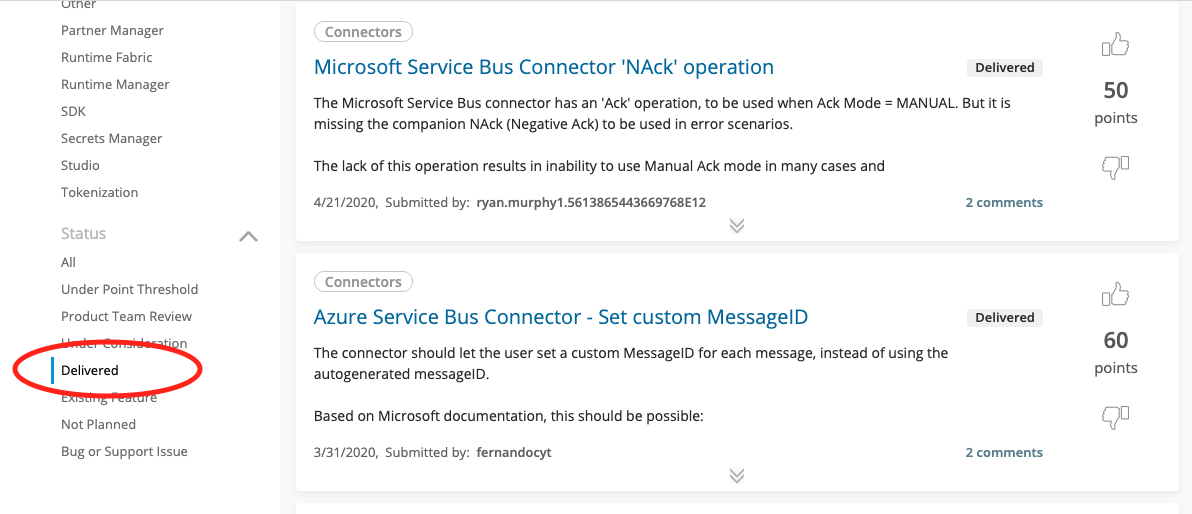When planning the roadmap of each release, product managers consider a variety of inputs to choose innovative features that meet customer needs and improve current functionality. When prioritizing what to focus on, we always consider our values: trust and customer success. Features that ensure the security, resiliency, and availability of the platform are put at the top of the list, with features that enable customer success right behind.
The Ideas Portal is one of the key inputs to release planning, as well as the other inputs and considerations:
- Ideas Portal use cases and upvoted ideas
- Market research and market demands
- Customer insights gathered by user research teams
- Product usage data
- Feedback from MuleSoft Customer Success and Support teams
- Strategic alignment to our long-term product vision and priorities
- Technical feasibility and cost to implement
- Impact to our customers
There is no magic number of votes to determine which ideas are selected. However, we aim to deliver the top voted ideas that align with our long-term product vision and are feasible for us to implement, while maintaining our platform’s sustainability.

The path from idea to feature functionality
Ideas start in and typically remain in “Under Point Threshold” while they gather votes. As an idea gets traction, it will automatically move to “Product Team Review” after 10 votes. The Product team actively monitors ideas in active states, paying special attention to newly added ideas, ideas growing in traction, and top-voted ideas. If more information is needed, the Product Team will typically ask for more details in the comments or will engage with our user research team to gather more feedback.
From upvotes to consideration and delivery
When the product team has sufficient information and sees the idea as a potential product enhancement, they will update the idea to “Under Consideration.” While an idea is Under Consideration it is still actively collecting information about market demand, so votes and comments help to solidify the case for this idea. MuleSoft product teams are doing research to learn more and validate assumptions, understand dependencies, and determine if and when the team can deliver a quality feature and its priority as compared to other ideas and roadmap items. Once confirmed, incorporating an item into the roadmap planning typically takes three to four months, and delivery one to ten months to build, test, and release depending on the complexity of the work. The Ideas portal status is not updated when an idea has been added to our Roadmap or in development due to this variation. Once a feature has been released to production, the corresponding idea status will be set to Delivered.
When an idea takes another path
There are a few scenarios when the idea will be “closed” without going through the above statuses. For example, if the Product Manager finds that the idea is supported by the platform, it will be marked “Existing Feature.” If an idea hasn’t gained enough interest over time, or it doesn’t align to our product vision, the idea is marked “Not Planned” and if the idea is a defect or support issue, the defect should be routed to support for resolution. When the status is updated, the Product Manager will provide a brief explanation for the decision, as well as any potential alternatives.
As the status of the idea is changed or updated, the Idea submitters and voters will receive emails noting when and how the status of their idea changed.
Ready to post an idea?
Ready to post an idea? Learn about how to upvote and create an idea, then share your ideas with us on MuleSoft Ideas Portal!









